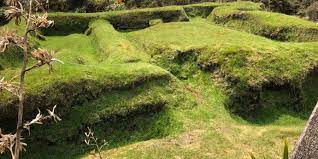Whangarei
17.89°C

Whangarei
17.89°C

Waitakere City
16.98°C

Manukau City
17.11°C

Papakura
24.46°C

Hauraki
17.26°C

Waikato
17.67°C

Matamata
18.46°C

Hamilton
17.51°C

Otorohanga
18.52°C

Rotorua
16.6°C

Taupo
15.44°C

Tauranga
19.27°C

Kawerau
18.6°C

Whakatane
19.64°C

Gisborne
15.51°C

New Plymouth
16.98°C

Stratford
8.97°C

Ruapehu
14°C

Wanganui
17°C

Palmerston North
16.41°C

Wairoa
19.19°C

Hastings
18.84°C

Napier
18.49°C

Masterton
15.49°C

Carterton
15.66°C

Porirua
15.99°C

Lower Hutt
16.45°C

Wellington
15.79°C

Tasman
9.35°C

Nelson
16.27°C

Marlborough
3.22°C

Kaikoura
15.48°C

Christchurch
12.59°C

Ashburton
12.52°C

Timaru
13.37°C

Waitaki
11.32°C

Waimate
13.08°C

Queenstown
12.38°C

Dunedin
14.33°C

Southland
9.98°C

Gore
11.31°C

Invercargill
12.06°C

Blenheim
14.73°C

Te Anau
27.35°C

Wanaka
11.17°C

Kaikoura
13.38°C

Stratford
13.54°C

Upper Hutt
15.9°C

About
The final phase of the New Zealand Wars began in mid-1868, when Tītokowaru attacked colonial troops in South Taranaki and Te Kooti escaped from the Chatham Islands with several hundred followers. Tītokowaru’s armed resistance had collapsed by mid-1869, but Te Kooti’s guerrilla campaign on the East Coast dragged on until early 1872. Later resistance was non-violent, as at Parihaka in 1881. Some argue that the last bastion of resistance held out until 1916, when jumpy wartime politicians sent the police into Rua Kēnana’s Urewera community at Maungapōhatu.
Te Kooti’s generalship was mixed. He could hit and run with the best of them but he flunked set-piece, fixed-defence actions such as Te Pōrere. In an ineptly executed piece of cultural shoplifting, Te Kooti or an ally (it is not clear who) built this British-style redoubt/pā on the bleak pumice lands at the western edge of the Rotoaira basin. It was about 20 m square, had flanking angles (bastions) at the opposing corners and stood apart from a maze of trenches and rifle pits. But Te Pōrere was a bad clone. The angles were poorly sited and the horizontal loopholes prevented the defenders from firing down into the ditch, which the government forces speedily occupied after taking out two small detached positions. On 4 October 1869, at the cost of four dead and four wounded, Lieutenant-Colonel Thomas McDonnell's forces, Ngāti Kahungunu and Arawa as well as Europeans, killed 37 and captured nearly 30. Te Kooti got one thing right, though. The bush next to the pā provided good cover for his flight, wounded, with other survivors. Heriage New Zealand has administered Te Pōrere for more than half a century. Its ‘restoration’ of the fort may not have met modern conservation practice, but that does not detract from the importance of the site of the last major battle of the New Zealand Wars.
